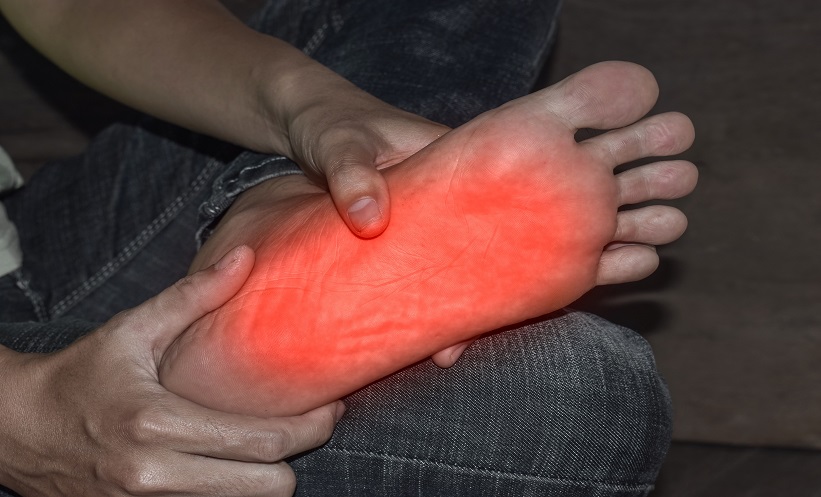Author: Ada Enesco, EMJ, London, UK
Citation: EMJ Diabet. 2024;12[1]:23-27. https://doi.org/10.33590/emjdiabet/PMUL5630.
![]()
THE RISING global prevalence of youth-onset Type 2 diabetes (Y-T2D) is a serious public health concern. With an aggressive clinical course and debilitating complications by young adulthood, there is an urgent need for effective strategies to inform prevention and treatment of Y-T2D. In a key symposium presented at the 60th European Association for the Study of Diabetes (EASD) Annual Meeting, three leading experts in diabetes shared alarming data on Y-T2D, calling for concerted efforts to improve understanding and management of this emerging epidemic.
EARLY PRESENTATION AND LONG-TERM COMPLICATIONS
For the first time, as of 2018, the incidence of T2D among adolescents aged 15–19 years in the USA exceeded that of Type 1 diabetes (T1D; 19.7 per 100,000 versus 14.6 per 100,000), stated Orit Pinhas-Hamiel, Sheba Medical Center, Tel-Aviv University, Israel. “The data are undeniable […] Y-T2D is an awakening epidemic.”
Hamiel presented two pivotal studies examining T2D in youth: the SEARCH for Diabetes in Youth (SEARCH) Study,1 an observational study initiated in 2000 at five sites in the USA, designed to estimate the prevalence, incidence, and complications of both T1D and T2D in youth; and the Treatment Options for T2D in Adolescents and Youth (TODAY) study,2 an interventional study on adolescents with T2D aimed at assessing various treatment options for disease management.
A key characteristic of Y-T2D is the early presentation of complications, with obesity, hypertension, and dyslipidaemia often evident at diagnosis. In the TODAY study,2 11.6% of adolescents with T2D were hypertensive at baseline. After 1.5 years of follow-up, the SEARCH study found that 27% of youth with T2D were hypertensive, 27% had low high-density lipoprotein, and 25% had elevated triglycerides.1 In a cohort of 500 adolescents with T2D in the TODAY study, 50% of young adults were hypertensive within 10 years after diagnosis, and male participants had almost a 50% higher risk than females of developing hypertension.3 After 13 years, 51.6% of participants had dyslipidaemia.3
However, management of hyperlipidaemia in Y-T2D continues to be suboptimal, and adherence to medication is poor. Only 5% of youth with T2D and lipid abnormalities are prescribed lipid-lowering medications, and only half of youth with hypertension are taking blood pressure-lowering medication, said Hamiel.
A primary microvascular complication in Y-T2D is diabetic kidney disease, which is associated with rapid progression and poor prognosis. Beginning with hyperfiltration as a consequence of obesity and impaired glucose tolerance, the second stage is reduction in glomerular filtration rate, typically accompanied by changes in kidney structure, which Hamiel noted are detectable among most adolescents within 1.5 years of T2D diagnosis. However, these changes are reversible, making this a critical time for intervention and risk factor reduction.
After 15 years, almost 55% of adolescents with Y-T2D are diagnosed with diabetic nephropathy. The SEARCH study found that, after 8 years of diagnosis, the prevalence of diabetic nephropathy was 19.9% among adolescents with T2D compared with 5.8% in those with T1D.1 Alarmingly, a recent meta-analysis also found that the age of T2D onset among those with macroalbuminuria was as young as 6.5 years.4
After 12 years of diagnosis, diabetic retinopathy was present in over ≥50% of SEARCH and TODAY participants, continued Hamiel, and after 15 years, one-third of the SEARCH cohort was also diagnosed with diabetic peripheral neuropathy. Furthermore, cardiovascular autonomic neuropathy was present in 17% of youth with T2D compared to 12% with T1D after 8 years, and heart rate variability was notably reduced in almost half of youth with T2D after only 1.7 years.1,2
Hamiel added that, among adolescents with T2D, HbA1c levels gradually continue to deteriorate through the follow-up period, with 45% displaying HbA1c ≥10% after 9 years of follow-up, and BMI remaining consistently in the range of 35–37.5 kg/m2.
Beyond microvascular complications, Y-T2D also presents serious macrovascular complications. Most adolescents exhibit predictors for cardiovascular disease such as lower vascular endothelial function, increased arterial stiffness, left ventricular hypertrophy, and diastolic dysfunction. The TODAY study reported 17 serious cardiovascular events among participants,2 with Hamiel reminding the audience that the median age of this cohort was only 26 years. A recent study combining SEARCH and TODAY data found that the probability of microvascular events was 2.5-fold higher in T2D than in T1D, and 4.0-fold higher for macrovascular events.5
Significantly, the standardised mortality ratio of youth with T2D aged under 15 years is almost 4-fold higher than that of T1D.6 Among youth with T2D, females had higher mortality rates than males, and diabetes was the underlying cause of death for 9.1% of participants, with other causes of mortality including cancer (10.9%), cardiovascular disease (9.1%), and suicide (10%). Alarming data from a life expectancy model predict that youth with T2D lose approximately 15 years of life.6
Finally, Hamiel touched on pregnancy outcomes in women with Y-T2D. The TODAY Study reported pregnancy complications in 65% of the women, with chronic hypertension complicating pregnancy in 35% of cases, and 25% resulting in pregnancy loss, 35% in preterm birth, and 3% in stillbirths, which is more than triple the reported national stillbirth rates in the USA. Additionally, 10% of offspring had cardiac anomalies, 10% had other congenital anomalies, 27% were large for gestational age, 29% had neonatal hypoglycaemia, and 19% had respiratory distress. Combined exposure to maternal diabetes and obesity in utero accounts for 47% of T2D risk in young offspring, emphasised Hamiel.
With the huge burden of complications suffered by adolescents with T2D, which significantly exceeds that of adults with T2D and youth with T1D, Hamiel called for “a proactive and assertive approach”, to intervene early and mitigate risk factors.
BRAIN AND COGNITIVE HEALTH IN YOUTH-ONSET TYPE 2 DIABETES
Allison Shapiro, University of Colorado Anschutz Medical Campus, USA, opened her session by drawing attention to the key processes in brain and cognitive development that occur after birth and throughout childhood and adolescence: myelination, synaptogenesis, and neurogenesis. Alarmingly, the onsets of paediatric obesity and Y-T2D are overlaid onto this neurodevelopmental trajectory.
Large cohort studies have consistently reported an inverse association between grey matter volume (GMV) and white matter integrity in the prefrontal cortex, and child BMI.7,8 Interestingly, one study also found that alterations in the structure of the prefrontal cortex may contribute to, and predict, behaviours that underlie weight gain and future risk of obesity.8 The authors also found that 70% of cortical-cortical functional connectivity had inverse correlations with BMI.8
Obesity in adult T2D has been linked to disruptions in key homeostatic brain regions, in particular the hypothalamus, which is responsible for appetite control and eating behaviour. Shapiro’s research is currently focused on hypothalamic connectivity in adolescents with and without severe obesity, and preliminary results suggest increased homeostatic-reward connectivity in adolescents with obesity compared to those with healthy weight. These data point to “neural signatures that likely contribute to cognitive behavioural risk factors for eating disinhibition,” explained Shapiro.
However, Shapiro stressed that very few studies have actually examined brain and cognitive health in Y-T2D. One study by Redel et al.9 found significantly lower GMV in youth with obesity and T2D compared to healthy controls, especially in the occipital and temporal lobes, which are associated with reading and writing, visual attention, receptive language, and memory encoding.
“What alterations in brain structure are unique to Y-T2D, compared to adolescents with obesity, and those with healthy weight?” Shapiro’s recent research found that unique characteristics of Y-T2D included reduced GMV in the orbital frontal cortex and anterior prefrontal cortex compared to individuals with obesity, which are regions responsible for decision-making, reward-related behaviour, and cognitive flexibility. A key feature shared both by youth with Y-T2D and youth with obesity included reduced GMV in the dorsal lateral prefrontal cortex.
Shapiro added that adolescents with Y-T2D also have lower processing speed and verbal working memory compared to both healthy controls and adolescents with obesity, showing that T2D impacts cognition functions beyond just the effect of obesity. Furthermore, Shapiro’s group also found that youth with T2D displayed a reduced overall fluid cognition compared to youth with T1D, based on data from the SEARCH study.10
Shapiro stressed that the observed brain alterations and deficits in Y-T2D may progress into middle or later adulthood, potentially affecting the development of dementia and other neurodegenerative diseases; however, there are currently no data that follow this.
MANAGEMENT OF YOUTH-ONSET TYPE 2 DIABETES: SHOULD IT BE DIFFERENT?
Amy Shah, Cincinnati Children’s Hospital Medical Center, Ohio, USA, explained that the current recommendations for initial treatment of T2D in youth depend on clinical presentation and HbA1c levels, as outlined in the 2022 International Society for Pediatric and Adolescent Diabetes (ISPAD) Guidelines.11
If HbA1c is <8.5% with no signs of ketosis/acidosis at diagnosis, the recommendation is to pursue a healthy lifestyle and titrate metformin to 2 g/day; if HbA1c is ≥8.5% with no signs of ketosis/acidosis, the recommendation is also healthy lifestyle and metformin, with additional basal insulin therapy. However, a more severe clinical presentation that includes ketosis, acidosis, or hyperglycaemic hyperosmolar syndrome warrants intravenous insulin until acidosis is resolved, then transition to subcutaneous insulin. The optimal target for HbA1c following initial therapy is currently 6.5–7%. For HbA1c levels ≥7–9%, a glucagon-like peptide receptor agonist (GLP-1 RA) is recommended, which should be combined with long-acting insulin if HbA1c levels ≥9%.
Nonetheless, Shah stressed that metformin failure rate is significantly higher in youth (52%) than in adults (21%), and so is the annual rate of beta cell decline (20–35% versus 7–11%).2,12 Furthermore, newer medications for Y-T2D are not as effective as expected. The greatest treatment difference that has been achieved to date, with regards to decrease in HbA1c compared to placebo, was only –1.5 percentage points with GLP-1 RA dulaglutide, and this was not associated with a significant reduction in BMI.13
With a more severe pathophysiology and poorer responses to medication, management of Y-T2D should absolutely be different to that of adult T2D, stated Shah. She highlighted four potential avenues for Y-T2D treatment: higher doses, medications that affect multiple hormones, alternative treatments, and combination therapy.
For instance, previous data indicate that higher doses of semaglutide (2.4 mg) in youth with obesity significantly reduced BMI by 15%,14 showing promise for treatment of Y-T2D. Furthermore, targeting different hormones in adults with T2D, using the combined GLP-1-RA and glucose-dependent insulinotropic polypeptide (GIP) agonist tirzepatide, led to a significantly stronger reduction in BMI and HbA1c compared to GLP-1 RA semaglutide.15 The GLP-1, GIP, and glucagon ‘tri-agonist’ retatrutide is also on the horizon, with promising preliminary results in adults with obesity. Regarding alternative therapies, Shah stated that weight loss surgery should be considered for a more dramatic reduction in BMI and mitigation of long-term complications.
Shah ended the session with the upcoming 2024 ISPAD Guidelines, which will recommend a new target of HbA1c <6.5% for Y-T2D for tight glycaemic control, and push for a combination approach to achieve this target. Given the aggressive nature of T2D, the recommendation will be to maximise metformin therapy, followed by the stepwise incorporation of a GLP-1 RA or SGLT2 inhibitor, long-acting insulin, and prandial insulin therapy where necessary. This combination approach has not been tested to date, and will need to be assessed in studies going forward.






